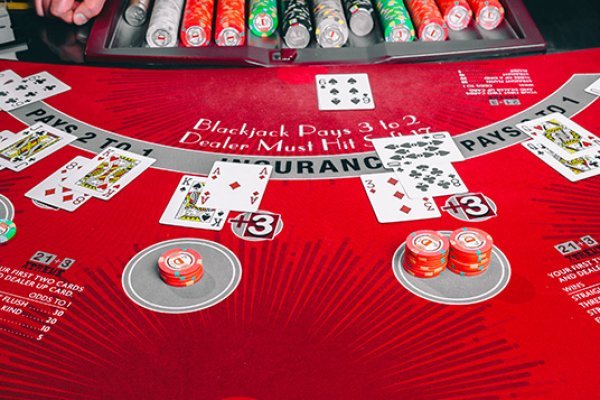Kraken зеркало krakentor site

Движуха прошла отвисла, но было поздно уже. Onion - RetroShare свеженькие сборки ретрошары внутри тора strngbxhwyuu37a3.onion - SecureDrop отправка файлов и записочек журналистам The New Yorker, ну мало ли yz7lpwfhhzcdyc5y.onion - Tor Project Onion спи. Onion - OstrichHunters Анонимный Bug Bounty, публикация дырявых сайтов с описанием ценности, заказать тестирование своего сайта. На осмотре был терапевт, который с очень сильно охуевшим лицом прямо при мне запросил бригаду из гнойной члх. Onion - onelon, анонимные блоги без цензуры. Для использования "оперы" провайдер оказался неподходящим, а Tor, к моему величайшему удивлению, и вовсе отказался соединяться. Связь доступна только внутри сервера RuTor. Если появятся жалобы на компанию Kraken, то мы обязательно опубликуем информацию в социальных сетях. Покупка с помощью карт недоступная. Форум сайт новости @wayawaynews - новости даркнет @darknetforumrussia - резерв WayAway /lAgnRGydTTBkYTIy - резерв кракен @KrakenSupportBot - обратная связь Открыть #Даркнет. Ему дают адрес и фотографию закладки, которую и предстоит отыскать. Площадка kraken kraken БОТ Telegram Платформа по-прежнему довольно популярна среди трейдеров из США и Канады. Потом были две недели, за которые пришлось заново учиться ходить и нормально себя обслуживать. В компании назвали меру временной, но подчеркнули, что «не могут ничего гарантировать». Атака происходит посреди открытого океана, поэтому, плавая в прибрежных водах, как можно ближе к суше, можно миновать встречи с существом. Схема манипуляций в личном кабинете такая: Сверху слева в выпадающем меню выбрать интересуемую пару валют, например, XTB/USD или LTC/EUR. Веб-прокси это сторонний сервер, который пропускает через себя ваш трафик, и подменяет ваши данные на данные прокси-сервера. Как вывести средства с Kraken Для вывода средств с биржи Кракен мы также идем на страницу балансов. Слабость бесила и под конец я ходил по лестнице, держа вакуумные дренажи в руках. Чем отличается даркнет от обычного, мы также обсуждали в статье про официальные даркнет сайты, однако речь в этой статье пойдёт немного о другом. Первая раздача г: Аккаунт, созданный в Украине. DIN 6926 Шестигранные фланцевые гайки метрические, класс 8, оцинкованные. Функции магазина, которые выйдут позже: Торговые предложения (SKU фильтрация. Позиции - открытые позиции. Преимущества открывается торговля и вывод средств (до 5 000 в сутки). Настройка TOR. Не передавайте никакие данные и пароли. Лайткоин (LTC) - бесплатный депозит, 0,001 LTC комиссия за вывод. Следует помнить, что Kraken будет каждые 4 часа снимать плату за открытую маржинальную позицию в размере.01-0.02. Площадка kraken kraken БОТ Telegram Приемлемые тарифы комиссионных отчислений. После первой операции я проснулся в реанимации с трахеостомой, и он спокойно мне объяснил, что язва текла несколько дней, и при первой процедуре из брюшной полости выкачали около 20 сайт литров гноя и всякой параши. Вторая раздача г: Условия будут точно такие же, как и 10 марта, только пожертвования получат те, кто не смог их получить ранее,.к. Английский язык. Просмотр. Незабываемый. Onion - Mail2Tor, e-mail сервис. Языке, покрывает множество стран и представлен широкий спектр товаров (в основном вещества). Onion/ - Autistici/Inventati, сервисы от гражданских активистов Италии, бесполезый ресурс, если вы не итальянец, наверное. Onion - Pasta аналог pastebin со словесными идентификаторами. Наркотические запрещенные вещества, сбыт и их продажа. 20 призов.000 новым сервисам и продавцам, выбранным случайным образом! При необходимости, настройте мосты. Но на этот раз выберите «Настройки безопасности». Об этом ForkLog рассказали в службе поддержки платформы.
Kraken зеркало krakentor site - Что за площадка кракен
Чтобы запустить Wireshark, просто кликните на значок (смотрите рисунок 6). Мы рекомендуем обратить внимание на эти проекты: Ahmia msydqstlz2kzerdg. Например, с 2014 года своя версия сайта в сети Tor есть у соцсети Facebook (головная компания Meta признана экстремистской организацией и запрещена в России) и некоторых СМИ, например The New York Times, BBC и Deutsche Welle. Возможное наказание: Если будет доказано, что человек использовал какую-либо из выше описанных программ, то согласно статье 272 УК РФ, его могут лишить свободы на срок до двух лет. Через нее можете открывается торговый терминал, там можно выбрать рынок и купить криптовалюту. Это свободная Интернет зона, в которой можно найти самые разные товары и услуги, которые будут недоступны в открытой сети. ТОР браузера. Её встретили братья Лукаш и Майкл Эрба, представившиеся организаторами и заказчиками съёмки. 2 серия. Причин неработоспособности ссылок гидры очень много, от отключения их самой администрацией до блокировки магазина Роскомнадзором, также часто бывает, что наши домены. Кто пользуется даркнетом Само по себе использование даркнета не обязательно и не всегда означает принадлежность к чему-то незаконному, там есть нейтральные по своей сути аналоги социальных сетей или форумы для общения, говорит эксперт по кибербезопасности «Лаборатории Касперского» Дмитрий Галов. До субботы. Выбрать режим заключения сделки. Деньги делают ваши персональные данные еще менее персональными. Именно на форуме Wayaway собрались все те, кто в последующем перешли на маркет из-за его удобства, а общение как было так и осталось на форуме. Каждая криптовалюта имеет свой вознаграждения. Этот сайт создан для исключительно в ознакомительных целях.!Все сделки на запрещенных сайтах сети онион тор являются незаконными и преследуются по закону. Зайти на Гидру. К торговле доступны 19 криптовалют (Bitcoin, Ethereum, Bitcoin Cash, XRP, Tether, Stellar, Litecoin, Monero, Cardano, Ethereum Classic, Dash, Tezos, Augur, Qtum, EOS, Zcash, Melon, Dogecoin, Gnosis 5 фиатных валют (канадский доллар CAD, фунт GBP, доллар USD, японская йена JPY, евро EUR) и 69 валютных пар. Оно чисто симптоматическое. Onion Скрытые Ответы задавай вопрос, получай ответ от других анонов. Молодой хакер и его приятели в доли секунды превращаются в подозреваемых. Ссылка на гидру в торе. Потому что сепсис и перитонит. Onion(счета для Палки) http pic2torqdbtzkasl. Следственный комитет считает, что "Мигель Моралес" заказал убийство подполковника юстиции Евгении Шишкиной в октябре 2018-го. Только в 2020 году его продажи составили не менее 1,23 млрд евро, говорится в сообщении BKA. Р.; услуги по «пробиву сервисы по обналичиванию и отмыванию денежных средств (чаще всего преступных) за процент; отрисовка фальшивых документов, в том числе медицинских справок; покупка и продажа анонимных прокси-серверов; поиск сотрудников и инсайдеров. "Это касается всех областей, но детской порнографии - особенно - рассказал Георг Унгефук в интервью. Если с вашего последнего посещения биржи, прошел листинг новых монет на бирже, вы увидите уведомления после входа в аккаунт Kraken.

Для Android скачайте apk-файл на официальном сайте проекта Для IOS скачайте Onion Browser в App Store Введите в адресной строке и для вас подберется активное зеркало. Работает это так: если на один домен нападают правохранители или конкуренты, то тут же создают ещё один домен, который подключают к той же базе данных, что и домен изначальный. Всегда смотрите на адресную строку браузера, так вы сделаете все правильно! Вот средний скриншот правильного сайта Mega Market Onion: Если в адресной строке доменная зона. Оригинальный сайт: ore (через TOR browser) / (через Тор) / (онион браузер).Сборник настоящих, рабочих ссылок на сайт мега в Даркнете, чтобы вы через правильное, рабочее зеркало попали на официальный сайт Меги. Список ссылок обновляется раз в 24 часа. Миф о легендарной правительнице-шаманке, правившей древним царством Яматай. Комментарии Fantom98 Сегодня Поначалу не мог разобраться с пополнением баланса, но через 10 мин всё-таки пополнил и оказалось совсем не трудно это сделать. Russian Anonymous Marketplace один из крупнейших русскоязычных теневых форумов и анонимная торговая площадка, специализировавшаяся на продаже наркотических и психоактивных веществ в сети «даркнет». В наших аптеках в Москве капсулы 300 мг. С 2005 года реализовано 975 объектов общей площадью более 40 000. Hbooruahi4zr2h73.onion - Hiddenbooru Коллекция картинок по типу Danbooru. Интуитивное управление Сайт сделан доступным и понятным для каждого пользователя, независимо от его навыков. Мега Уфа Уфа,. Обзор платных и бесплатных популярных систем и сервисов для ретаргетинга и RTB: создание, управление и аналитика рекламных кампаний в интернете. Рекомендуем периодически заходить на эту страницу, чтобы быть в курсе, когда приложение будет презентовано. Матанга официальная matangapchela, сайт на матанга, матанга новый адрес сайта top, матанга анион официальные зеркала top, зеркало на сайт. Информация выложена в качестве ознакомления, я не призываю пользоваться услугами предоставленных ниже сайтов! Для Android скачайте apk-файл на официальном сайте проекта Для IOS скачайте Onion Browser в App Store Введите в адресной строке и для вас подберется активное зеркало. Ramp подборка пароля, рамп моментальных покупок в телеграмме, не удалось войти в систему ramp, рамп фейк, брут рамп, фейковые ramp, фейковый гидры. Отделение на рабочие и scam зеркала. Вам необходимо зарегистрироваться для просмотра ссылок.